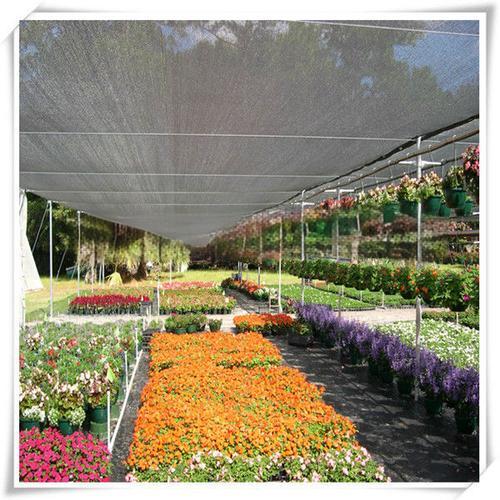Why Use Shade Cloth for Your Garden: The Benefits and Best Practices
Gardening enthusiasts and professionals alike are increasingly turning to shade cloth as a vital tool for improving plant health. But why use shade cloth for your garden? The answer lies in its ability to offer a wide range of benefits, from protecting plants against the harsh sun to regulating temperature and even preserving soil moisture. By creating an optimal growing environment, shade cloth enables gardeners to cultivate healthy plants that thrive, even in the most challenging conditions. Whether you are managing a small backyard garden or a commercial farming operation, shade cloth can make all the difference in plant growth and productivity.

What Is Shade Cloth?
Shade cloth is a woven or knitted fabric typically made from polyethylene or similar materials, designed to provide varying levels of shade. The cloth is available in different densities, also referred to as shade percentages, which determine how much sunlight is blocked. For example, a 30% shade cloth will block 30% of sunlight, while a 70% shade cloth blocks 70%.
Shade cloth comes in various colors, with black, green, and white being the most common. Each color offers unique advantages, with darker colors absorbing more heat and lighter colors reflecting sunlight. This flexibility makes shade cloth a popular choice for both home gardens and commercial agricultural operations, where different plants and crops require tailored growing environments. Whether you're growing delicate flowers or heat-sensitive vegetables, shade cloth offers a simple, cost-effective solution for plant protection.
Key Benefits of Using Shade Cloth in Your Garden
Shade cloth provides several important benefits, making it an essential tool for maintaining a healthy garden. Here are the primary advantages:
Protecting Plants from Excessive Sunlight
Certain plants, particularly those with delicate leaves or flowers, are susceptible to sunburn when exposed to too much direct sunlight. Shade cloth acts as a protective barrier, blocking harmful UV rays and reducing the intensity of the sun. This helps prevent damage, particularly during the hottest parts of the day, ensuring that plants receive the right balance of light for optimal growth.
Controlling Garden Temperature
One of the biggest challenges gardeners face is maintaining a consistent temperature in their garden, especially in hotter climates. Shade cloth helps regulate the temperature by reducing the amount of direct sunlight that reaches the plants. This can significantly cool the growing environment, preventing overheating, which is especially crucial during summer months when extreme heat can stress or even kill plants.
Reducing Water Evaporation
Water conservation is another key advantage of using shade cloth. By reducing the amount of direct sunlight that hits the soil, shade cloth minimizes evaporation, helping to retain moisture in the soil for longer periods. This is particularly useful for regions that experience droughts or for gardeners looking to cut down on watering costs. The result is not only healthier plants but also more efficient water usage.
Versatility for Different Plant Types
Shade cloth can be customized to meet the specific needs of various plants. Some plants, like leafy greens and ferns, thrive in lower light conditions and can benefit from higher shade percentages (50% or more). On the other hand, plants that require more sunlight, such as tomatoes or peppers, may only need 20-30% shade. The versatility of shade cloth makes it ideal for gardens that feature a wide variety of plants, allowing each one to receive the exact amount of light it needs for healthy growth.
How to Choose the Right Shade Cloth for Your Garden
Selecting the appropriate shade cloth for your garden is key to maximizing its benefits. There are several factors to consider when making your choice:
Shade Cloth Density (Percentage)
The shade percentage is perhaps the most important factor. For most vegetable gardens, a 30-50% shade cloth is sufficient to provide protection without compromising sunlight absorption. For more sensitive plants, a 60-70% shade cloth might be required.
Color of Shade Cloth
The color of the shade cloth can also influence its effectiveness. Black shade cloth absorbs heat, making it ideal for cooler climates where additional warmth is beneficial. Green shade cloth is more aesthetically pleasing and blends well with the natural surroundings, while white shade cloth reflects sunlight, keeping the area underneath cooler.
Material and Durability
Shade cloth is available in both knitted and woven forms. Knitted shade cloth is generally more durable and resistant to tears, making it ideal for long-term use. Woven shade cloth may be more affordable but can fray over time. Depending on your garden’s needs, choosing the right material will ensure that your shade cloth lasts as long as possible.
Best Practices for Installing Shade Cloth in Your Garden
Once you’ve selected the right shade cloth for your garden, proper installation is critical to getting the most out of it. Here are some best practices:
Correct Placement
When installing shade cloth, it’s important to position it where it can effectively protect the plants without obstructing essential airflow. Ideally, the shade cloth should be suspended above the plants rather than wrapped around them, allowing for better air circulation and preventing overheating.
Proper Tension
Make sure the shade cloth is securely fastened to prevent it from sagging. Sagging cloth can block too much sunlight or collect rainwater, which may damage the plants underneath. Using clips, ties, or even a framework can help keep the cloth taut and in place.
Seasonal Adjustments
In some regions, you may need to remove or adjust your shade cloth depending on the season. For example, during cooler months, reducing the shade percentage or removing it altogether can help ensure plants receive enough sunlight.
Conclusion
In conclusion, using shade cloth in your garden is an excellent way to protect your plants from excessive sunlight, regulate temperature, and reduce water evaporation. Its versatility means it can be tailored to suit a variety of plant types and garden sizes, ensuring healthier, more resilient growth. Whether you're a seasoned gardener or just starting out, shade cloth offers a simple yet effective solution for optimizing your garden's growing conditions.
Ready to improve your garden's health and productivity? Start by investing in the right shade cloth today and experience the benefits for yourself!

